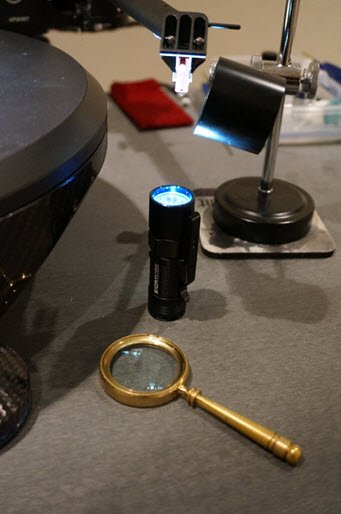Can I just say first of all say thanks for the superb thread - really helpful, and puts me in the right direction for my own project. I just need to source pump parts in the UK.
That aside can i just ask this as it flows from a vacuum demonstration many years ago. That demo was by a guy in the 80's who visited our home from KIRBY. The machines cost about £1000 in the early/mid 80's. I digress. What he did say, and demonstrate was that before you wet clean a carpet, you need to vacuum out the initial dirt as otherwise any liquid turns to mud. Whenever i do a house clean I vacuum the floor before using a mop.
Vis a Vis
With record cleaning have you tried a dry method to initially remove the dirt, or considered something - even something simple like a latice grid that does not touch the actual viyl surace that allows you to vaccuum the record first before any wet process.
On another note does an 80KHz bath make a reeal differrence?
The guy at Kirmuss did an interesting demo about the stuff on a record post manufacture - does the USM deal with this??
Hi Loheswaran
I'm glad you are enjoying this thread. It features a lot of good discussion on record cleaning with an orientation towards the DIY system described in the opening post. I'll to touch on your topics:
Vacuuming a record before wet cleaning - Across the various audio forums and publications on record cleaning I've not read about anyone doing this or heard of any RCMs that offer a pre-clean vacuum feature. It would require a vacuum that, as you suggest, does not touch the record. The dirt on the record would need to be loose. It's unclear if that would gain much versus many of the techniques adopted thus far that are aimed at removing both loose particulate and those adhering to the vinyl.
For "super dirty" records, a two stage process is possible if you have both a horizontal oriented vacuum machine such as a VPI or Loricraft and a vertical ultrasonic tank. Apply a sufactant solution, gently agitate it with something like a nylon brush then use the vaccum machine to remove the solution. Then do a pure water rinse and vacuum. Then proceed to ultrasonic cleaning.
USC Frequency - there's plenty of discussion on this topic. Operating frequency influences cleaning effectiveness. The higher the cavitation frequency the smaller the ultrasonic bubbles, the less the implosive power of their vacuum as it strikes the record surface. Removal of smaller particles not visible to the naked eye can require smaller bubbles which also may reach deeper into the groove. General opinion here suggests an operating frequency between 80kHz to 120kHz.
However higher frequencies are not as effective removing larger particles or heavier substances such as grease or oil, or substances such as mold and tobacco type contaminents. Here, lower frequency cavitation in the 35kHz - 40kHz range is warranted.
Imo a dual frequency USC machine is better. The P-Series from
Elmasonic is an example; it can operate at 37kHz or 80kHz. It also has a mode that alternates between each frequency every few seconds. Imo the primary flaw of the single record Degritter desktop machine is that it operates soley at 120kHz.
Record composition post manufacture - vinyl record composition is proprietary to each manufacturer, so it's not easy to know what is in or on a specific new record fresh out of its sleeve. Dibasic lead stearate or cadmium or other esters of stearic acid (for example) make up as much as 2 percent of the vinyl compound. These additives provide thermal buffering for the vinyl during pressing, aid the platter’s release from the mold and prevent oxidation on the newly minted record. Mold-release agents, lubricants, plasticizers and anti-static additives can be on the record surface. Function served, some of these turn into foreign substances between stylus and groove, where they remain and attract dirt. Chemical analyses of 50-year-old used records reveals mold-release agent still in the groove.
Cleaning with an ultrasonic machine can remove some of the above. It's actually a fairly complex chemistry subject (or approaches the boundaries of my knowledge) and cleaning depends in part on the chemicals, composition and exposure time in the cleaning solution. I tend toward asking myself does the record sound clean when you play it. Hope some of this helps. Thanks for your interest.
tima









